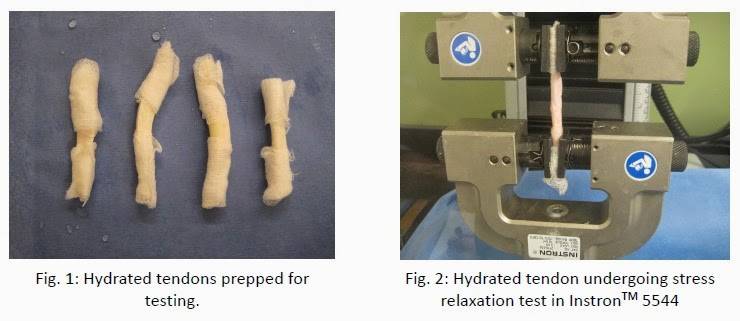After ACL injuries, the wounded tend to undergo reconstructive surgery to insert grafts for knee rehabilitation. Over time, the ACL grafts lose tension strength. To prevent this, creep and stress relaxation methods are used on the grafts. Although relaxation techniques are common, universal standards are not used in evaluation of the best method.
Therefore, the students tested various protocols. Stress ratios between 15-minute pretensioning methods were significantly different: stress relaxation (0.47 ± 0.008) and creep (0.62 ± 0.005). This demonstrated that a creep protocol offers greater load retention after ACL reconstructive surgery. Interestingly, no significant difference was found when comparing 5-minute creep (0.63 ± 0.017) to 15-minute stress relaxation (0.47 ± 0.008). These results demonstrated the potential for physicians to save time in the operating room.

Instron was proud to attend symposium and watch WPI students Spencer Keilich, Allison Indyk, Jeremy Kibby, and Shreyas Renganathan present their fascinating research.